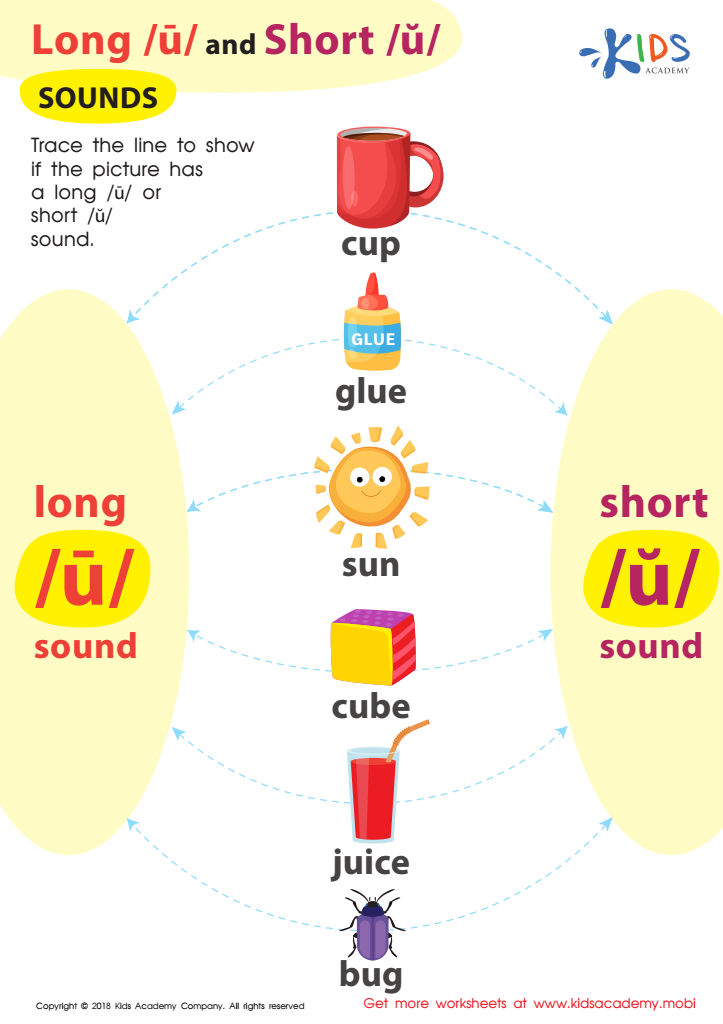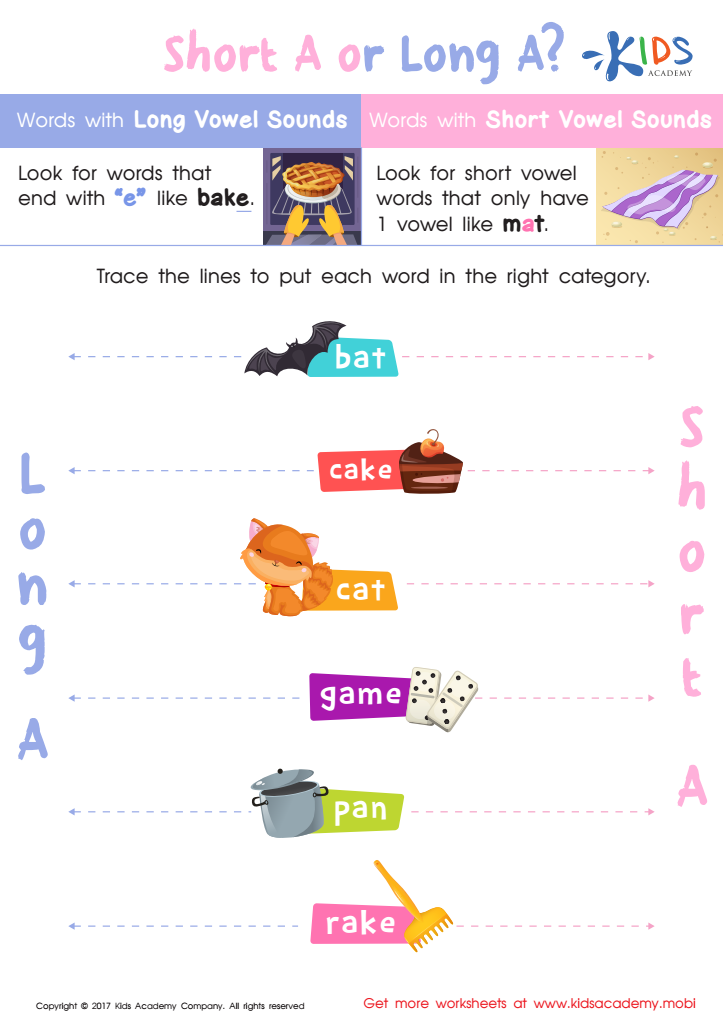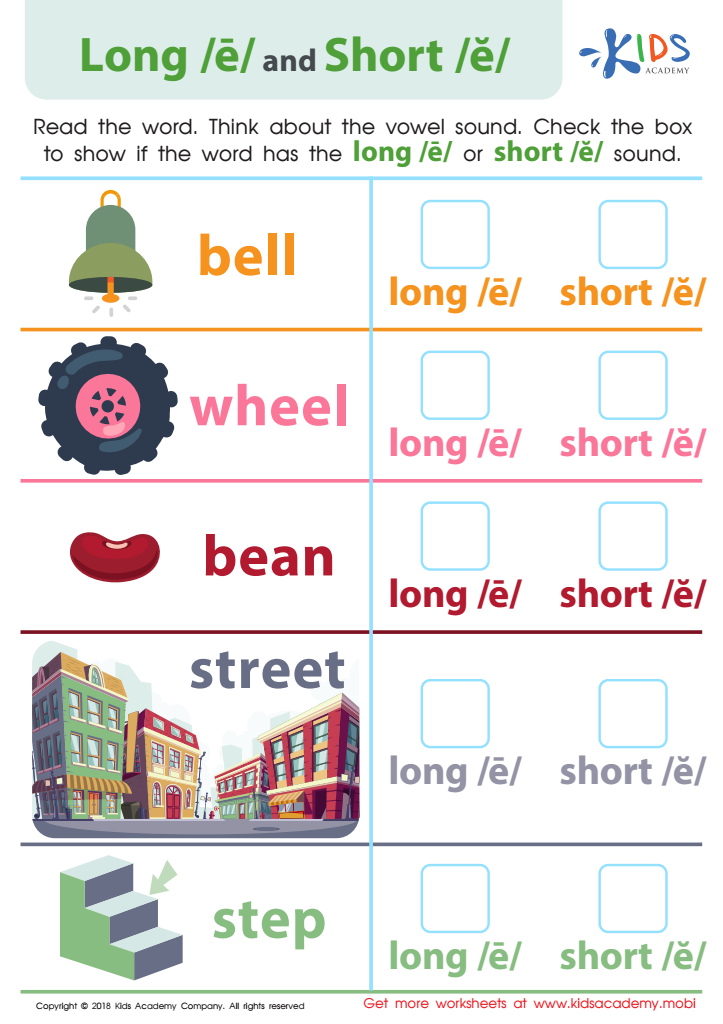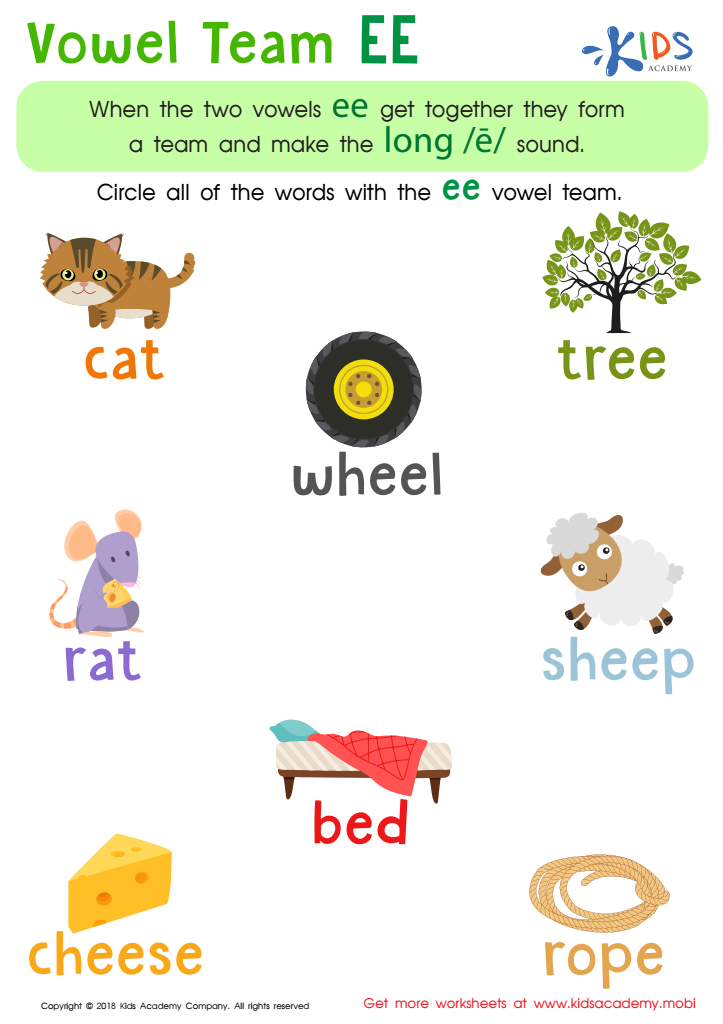Normal Long And Short Vowel Worksheets for Ages 5-7
18 filtered results
-
From - To
Discover our engaging "Normal Long and Short Vowel Worksheets" designed for children aged 5-7! These interactive worksheets help young learners master the essential concepts of vowels, distinguishing between long and short sounds. Each activity promotes phonemic awareness through fun exercises that encourage reading and pronunciation skills. Ideal for classroom use or at-home learning, our worksheets cater to various learning styles, making vowel education enjoyable and effective. With colorful designs and age-appropriate challenges, kids will build confidence in their language abilities while having fun. Explore our collection today and give your child the tools they need for reading success!


Let's Check Long Vowels: Assessment Worksheet


Reading: Long O and Short O Sounds Worksheet


The Short I Words Reading Worksheet


Phonics Long O Reading Worksheet


short vowels Worksheet


Long or Short Vowel Sound? Worksheet


Why Vowels? Reading Worksheet


Reading: Long U and Short U Sounds Worksheet


Long Vowel Maze /o/ and /i/ Worksheet


Short /a/ or Long /a/? Worksheet


Reading: Long E and Short E Worksheet


Words with Long U Reading Worksheet


Reading: Long a and Short a Worksheet


Two Sounds for OO Worksheet


Reading: Vowel Team EE Worksheet


Silent E Words Worksheet


Reading: Long I and Short I Sound Maze Worksheet


Reading: Y as Long I Worksheet
Understanding normal long and short vowels is crucial for children aged 5-7 as it forms the foundation for their reading and writing skills. At this developmental stage, children are beginning to recognize sounds and letters, and grasping the difference between long and short vowels can significantly enhance their phonemic awareness. Short vowels, like 'a' in "cat," and long vowels, like 'a' in "cake," play a vital role in word pronunciation and spelling, helping children decode unfamiliar words.
Parents and teachers should be concerned about vowels because they are essential for developing reading fluency. Mastery of vowel sounds contributes to children’s ability to break words down phonetically, which is critical when they encounter new vocabulary. This skill not only builds confidence in young readers but also lays the groundwork for comprehensive literacy development.
Additionally, understanding these vowel sounds fosters improved communication skills. Recognizing and using the correct vowels can greatly enhance children’s writing abilities and increase their chances of success in other academic areas. By prioritizing the teaching of long and short vowels, parents and teachers equip children with essential tools that promote both immediate academic achievement and long-term educational growth.
 Assign to My Students
Assign to My Students


















